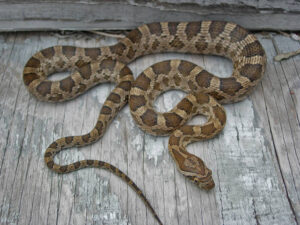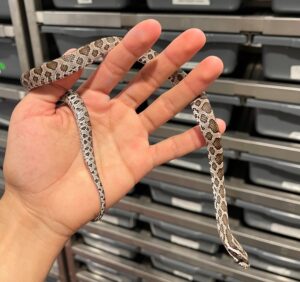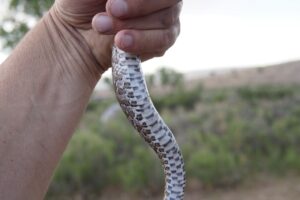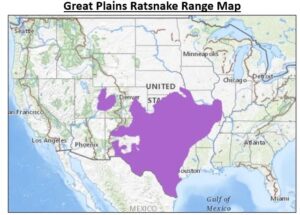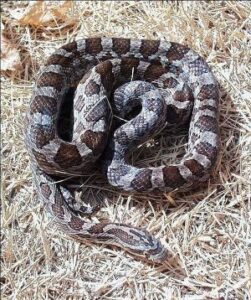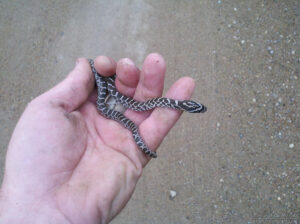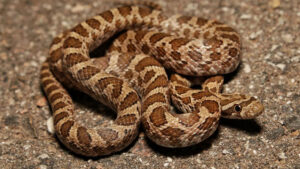The Great Plains rat snake is a species of rat snake in the family Colubridae. Its specific name, emoryi, is in honor of Brigadier General William Hemsley Emory, the chief surveyor of the U.S. Boundary Survey team of 1852, who collected specimens for the Smithsonian Institution. Hence, it is also known as Emory’s rat snake. Other common names of the burrowing, semi-arboreal species are Emory’s pilot snake, Emory’s Coluber, Emory’s snake, Emory’s racer, mouse snake, spotted mouse snake, prairie rat snake, western pilot snake, and Texas rat snake.
Scientific Classifications
- Suborder:Serpentes
- Family:Colubridae
- Genus:Pantherophis
- Species:P. emoryi
Conservation Status
Description
Size
The snake grows to a total size of 3-5ft (0.91-1.52 m), including the tail.
Color and Appearance
The snakes are tan or light gray in color, with brown, gray, or green-gray blotching down their dorsal side. Stripes on either side of the head meet at a point between the eyes.
Are They Dangerous to Humans
When agitated, it curls up tightly and shakes its tail vigorously, which doesn’t make any noise by itself. But when it shakes among dry leaf litter, it can produce a sound similar to rattlesnakes causing people to misidentify the species. Though it is non-venomous, having very small teeth, it can bite. Nevertheless, it is a very calm and non-aggressive snake.
Great Plains Rat Snakes at a Glance
Distribution
The Great Plains rat snake is a native of the central part of the U.S., from Missouri to Nebraska, to Colorado, south up to Texas, and then into northern Mexico.
Habitat
It prefers lightly forested habitats or open grasslands, but can also be found in semi-arid regions, coastal plains, and moderately mountainous, rocky regions. It frequents farmlands and other regions with high rodent populations.
The Great Plains ratsnake tends to remain motionless most of the time it is awake, which is unusual for a nocturnal creature. On average, it only moves 617 ft (188 m) daily.
Lifespan
The Great Plains rat snake has an average lifespan of 21 years.
Predators
Red foxes, gray foxes, raccoons, owls, and red-tailed hawks are its predators.
Diet
Its diet mainly consists of rodents. It also eats birds and occasionally lizards, snakes, and frogs, all subdued by constriction.
Reproduction
Oviparous (lays eggs that hatch outside the body)
It lays clutches of around 25 eggs in late spring. Common egg-laying sites are fallen and standing hollow trees, mulch, compost, sawdust piles, and rotting logs.
Care Sheet
Size of the Enclosure: The babies can be housed in 20-gallon tanks or tubs. The minimum enclosure size of an adult is 6ft (length) x 2ft (breadth) x 2ft (height).
Temperature: The hot side of the tank should have ambient temperatures of 81-82°F while the cool side ambient temperature should be 75°F.
Humidity: As there is no humidity requirement for the species, keeping only a water bowl, large enough for the pet to soak in, at the cool end of the cage suffices.
Substrate: Good choices for the substrate are aspen, kiln-dried pine (with the oils baked out) and a 60:40 mixture of organic topsoil and children’s play sand.
Feeding: The pet should be fed a diet of rats or mice of suitable size, depending on the size and age of the snake. It can be given chicks as a treat but not as the primary diet.
Source
digital.sfasu.edu, cloudfront.net, coloradosnakes.com, birdwatchinghq.com, illinois.edu, psychoticnature.com, webapps.fhsu.edu

